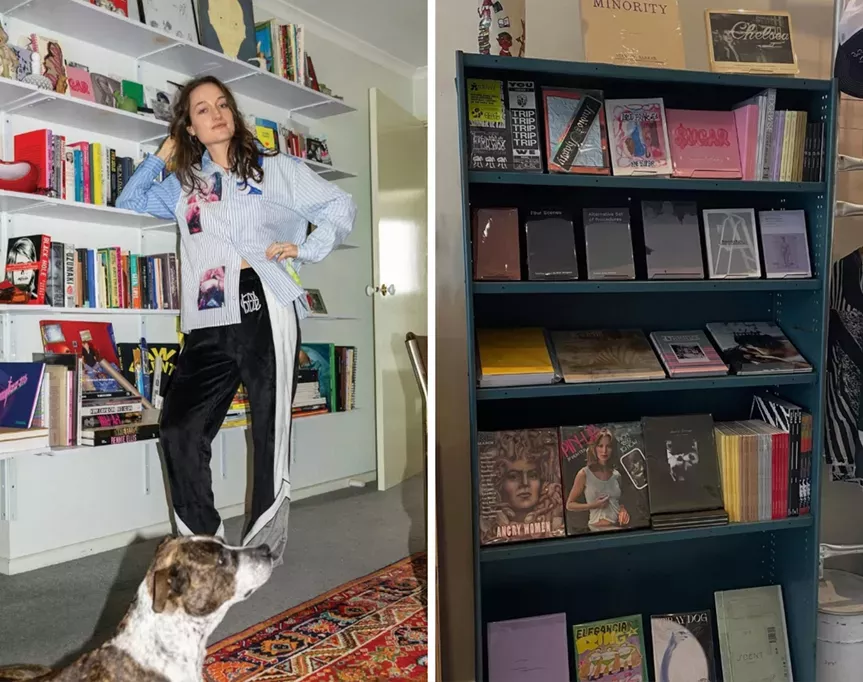tips on getting your writing published
Publishing marketer-turned-freelance editor Lacey Walker shares some essential info for getting your words out into the world.
Moving a reader from laughter to tears through ink on a page is an incredible skill, but writing the story is only half the battle. Lots of writers share the goal of getting their work published – whether it be fiction or non-fiction – and the journey from typing “The End” in a Word doc to holding your paperback in your hands is long and tedious. There are many forks in this road, and no two authors take identical routes. Fortunately, I know a few things about the whole debacle.
EDITING, FEEDBACK AND NETWORKING So your draft is complete… now what? Firstly, let’s get one thing straight: if you’ve written a book, you’re not an ‘aspiring’ author – you did the damn thing! Secondly, you need to make sure you’re putting forward the best possible version of your work. Self-editing is super-duper important. Check spelling and punctuation for consistency, correct typos, fill plot holes and tie up loose ends. Afterward, get a trusted buddy to read your manuscript and provide feedback. Odds are their fresh eyes will pick up on mistakes you’ve missed. Thirdly, network continuously. Fellow writers (especially those in similar genres) can point you in the right direction, provide support and recommendations, and let you know what to expect on your publishing trip.
TRADITIONAL PUBLISHERS AND LITERARY AGENTS One way to get your draft out there is through traditional publishing houses, who all follow the same basic process: an author provides the manuscript and the publisher takes care of the rest, pocketing a percentage of book sales in return. Some publishers, like Penguin, Pan Macmillian and Hachette accept unsolicited submissions. They’ll ask for a formatted sample excerpt, a synopsis and a brief author bio. Because of the insane amount of time, effort, and money publishers put into a single novel, they can’t accept every manuscript that’s slapped on the submissions desk. Cue the literary agents: these third-party individuals connect an author with a publisher – using their industry contacts and publishing knowhow – in exchange for a percentage of book sales. If this sounds like your cup of tea, check out the Australian Literary Agents’ Association.
SELF-PUBLISHING ISN’T JUST A LAST RESORT What was once considered a backup plan for those who didn’t make the cut with traditional publishers, has since become the go-to method for oodles of indie authors. If you self-publish then you’ll have to organise everything yourself, but a lot can be outsourced to freelancers. There are heaps of independent editors and proofreaders in Australia (be sure to check their credentials and reviews). Programs like Scrivener and Vellum can help with writing and formatting. If you’re keen to design your own cover, Canva is a great place to start. Ingram Spark, Kindle Direct Publishing and Draft2Digital can handle printing and distribution and while they will take a cut of royalties, they aren’t selective like traditional publishers. It might seem like more work, but self-publishing is far more lenient and flexible – plus you get to reap more profit, retain your copyright and can essentially publish whatever you want. No more rejections and no more jumping through hoops to please the higher-ups.
SUBMIT, SUBMIT, SUBMIT! Whatever publishing avenue you pursue, it’s important to build that writer image, get exposure and carve out a name for yourself as an author. Submit your manuscript to agents and publishers. Submit your short stories and articles to magazines. Submit your work for awards and competitions (the Australian Writer’s Marketplace has a thorough list). Traditional publishers love a good summary of publishing successes, so it never hurts to give it a go.
DON’T LET REJECTIONS GET YOU DOWN When you’re submitting here, there, and everywhere, you might get a few “yes please” from folks, but you’re ought to get way more people saying “no thank you”. Just because a big-name publisher that skims hundreds of manuscripts a week doesn’t offer you a book deal does not mean your writing is bad. Don’t be discouraged and don’t consider rejection harsh or negative – it’s a part of being a writer. Some of the most successful authors in history had their novels rejected an astonishing number of times.
WRITE FOR YOURSELF Everyone is at a different stage in their writing journey, and comparison sows seeds of bitterness and jealousy. You can’t compare your first draft to a bestseller, and you can’t compare yourself to a bestselling author – they’re chalk and cheese. Even if you crave bestseller status, don’t write a book to be ‘publishable’. Write a book because it’s a story you want to tell. Publishers aren’t interested in carbon copies of previous successes. They’re interested in fresh, original tales told from unique, innovative perspectives. If you’re true to yourself and your narrative, all other pieces of the publication puzzle will fall into place in time.
For more small-business stories like this, visit frankie.com.au/strictly-business, or sign up to our monthly e-newsletter. Have a small-business story you’d like to share? Pitch it to us.

.jpg&q=80&h=682&w=863&c=1&s=1)

.jpg&q=80&h=682&w=863&c=1&s=1)








.jpg&q=80&w=316&c=1&s=1)













.jpg&q=80&w=316&c=1&s=1)










